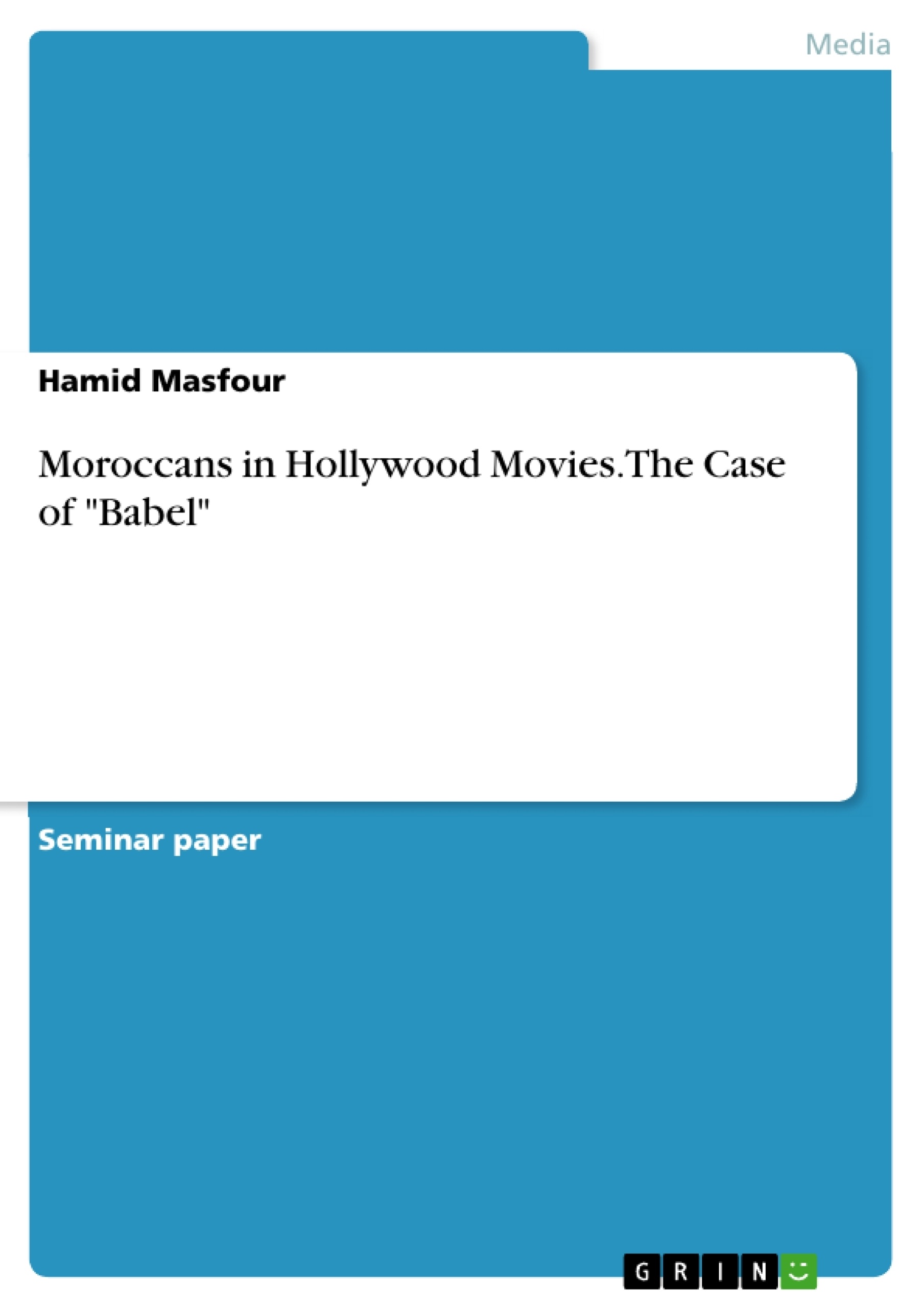After an overview on the stereotyped view of American cinema on different cultures, the paper proceeds to explore how Hollywood represents Moroccans and how it perpetuates an orientalist imaginary in the case of the American Film "Babel".
Although on a manifest level this movie represents Moroccans without offending their culture, it approaches them on a latent level through a repertory of denigrating stereotypes belonging to a Eurocentric tradition. Accordingly, due to a racist undercurrent pervading its representation of Morocco, "Babel" fails in conveying a universal humanistic message claimed all along the plot of the film.
Inhaltsverzeichnis (Table of Contents)
- Introduction
- I-Hollywood and its others
- II-Representing Moroccans in Hollywood
- III- Moroccans represented in Babel
- III.1 Film synopsis
- III.2 Levels of representations in Babel
- 2.1 Manifest representations
- 2.2 Latent representations
- Conclusion
Zielsetzung und Themenschwerpunkte (Objectives and Key Themes)
This article examines Hollywood's representation of Moroccans and its perpetuation of orientalist stereotypes, using the film Babel as a case study. The article explores how Hollywood's portrayal of different cultures contributes to a biased worldview. It delves into both manifest and latent levels of representation, analyzing how the film presents Moroccans while simultaneously reinforcing established stereotypical tropes.
- Orientalism and its influence on Hollywood representations
- Stereotypical portrayals of Moroccans in American cinema
- The film Babel as a case study of orientalist imagery
- Manifest and latent levels of representation in Babel
- The impact of Eurocentric perspectives on Hollywood's representations
Zusammenfassung der Kapitel (Chapter Summaries)
- Introduction: This section sets the context by discussing how Hollywood has historically used its platform to promote a particular worldview, often through biased representations of other cultures. The article specifically focuses on the portrayal of Moroccans and how it perpetuates orientalist stereotypes, using the film Babel as a key example.
- I-Hollywood and its others: This chapter provides an overview of how American cinema has historically stereotyped various groups, including Native Americans, Germans, Russians, and Vietnamese. It explores the ways in which Hollywood has been used to justify American dominance and to perpetuate a Eurocentric perspective on the world.
- II-Representing Moroccans in Hollywood: This chapter analyzes how Hollywood has often depicted Morocco as a primitive and exotic place. It examines specific films from different eras and identifies how these representations contribute to a demeaning portrayal of Moroccans, reinforcing stereotypes about their culture and identity.
Schlüsselwörter (Keywords)
The key terms and concepts explored in this article include: orientalism, representation, stereotypes, manifest and latent representations, Eurocentric perspectives, film analysis, cultural bias, and the film Babel.
- Quote paper
- Hamid Masfour (Author), 2016, Moroccans in Hollywood Movies. The Case of "Babel", Munich, GRIN Verlag, https://www.grin.com/document/351110



